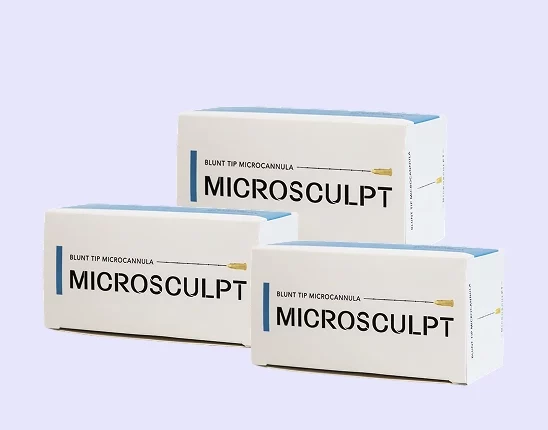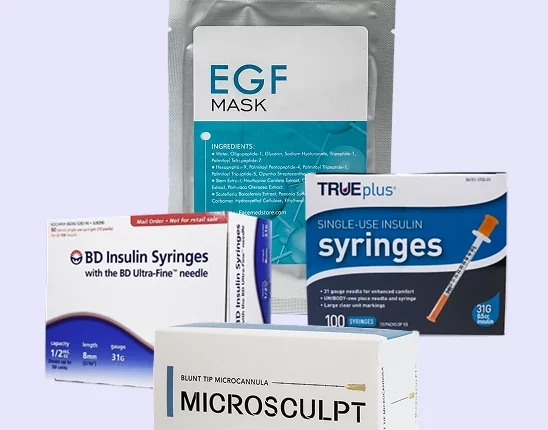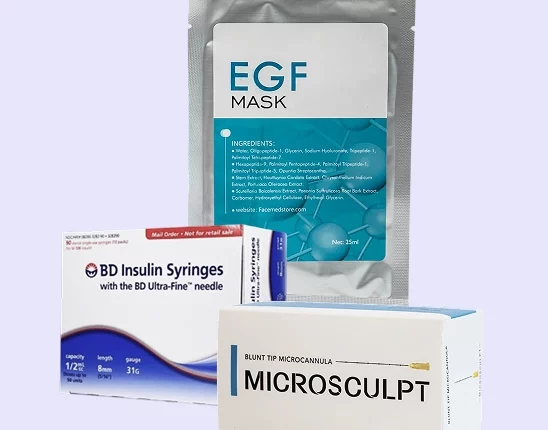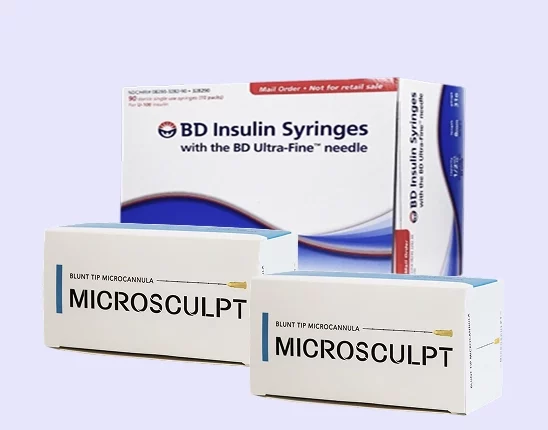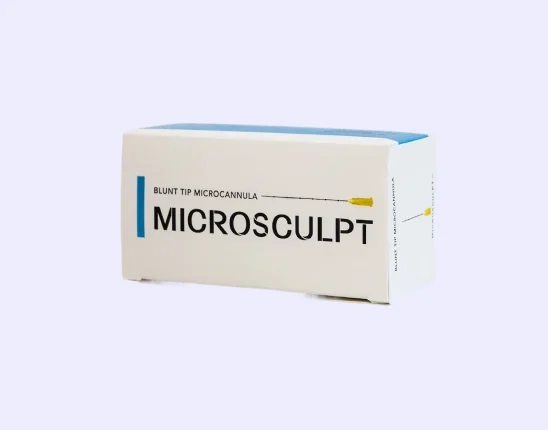Injectable dermal fillers are some of the most performed cosmetic procedures done in most cosmetic practices today. Traditionally, the hypodermic sharp needle was the medical tool of choice to administer these treatments. But recent innovations in medical tools have made microcannula injections more popular, with the microcannula technique offering a lot of benefits to both patient and injector.
So what exactly are the merits of using microcannula for fillers? The microcannula technique uses the design of the blunt cannula to avoid the most common side effects like bruising, allows for better penetration of the tissue layer, and improves the results of the filler treatment on specific areas like the nasolabial fold.
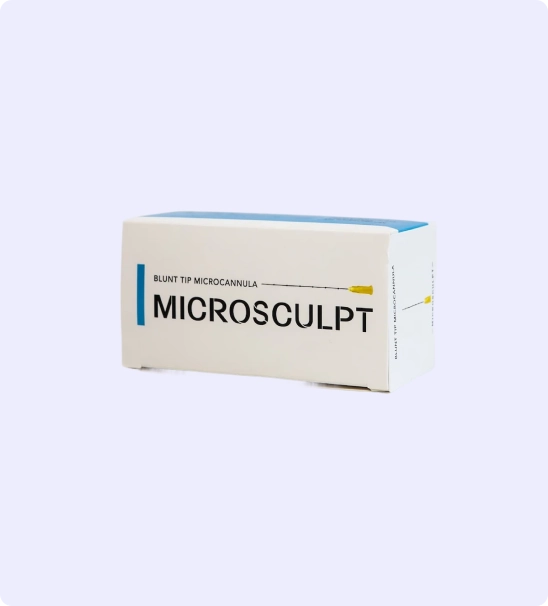
Injections Your Patients Will Love! Code “20OFF” Takes 20% off Your First Order!
Microcannulas are a tool that every great injector must master. Patients want quick results with no downtime. Our microcannulas are high quality and a fraction of the price of our competitors!
You can create an account here.
Why the Blunt Tip Microcannula Is Ideal for Deep Injections and Cosmetic Fillers
Facial anatomy has always been one of the most difficult things to manage with injection treatments, especially ones that involve injectable dermal fillers. Since facial filler has to be injected deep below the skin, traditional needle injection was the mainstay of making sure that injectable fillers got to the injection site without much difficulty.
While this approach worked, traditional needle treatment meant that the skin of the patient experienced significant trauma because of the sharp tip of conventional needles. But a blunt tip cannula — and the microcannula technique as a whole — can neatly sidestep this and other drawbacks by using a more efficient injection technique that’s uniquely suited for cosmetic fillers and deep injections.
Here are four advantages that microcannula injections have over using the sharp tip hypodermic needle:
1. Fewer entry points needed
One issue with sharp needle use in a dermal filler injection is if the procedure would require multiple filler sites since this meant that the skin would have to endure multiple sharp tip injections. This meant more surface trauma to the skin (and deep tissue trauma with an intravascular injection), with the most severe of cases actually having the hypodermic needle reach the periosteum.
The reason for this was that a sharp-tipped needle couldn’t be maneuvered underneath the skin after the initial injection since that increased the risk of puncturing a blood vessel or a vein. But a blunt cannula can easily push any blood vessel aside instead of penetrating it like a sharp needle, which meant that microcannula injections had the capability of reaching more areas around the skin and face without bruising or bleeding.
2. More control during the dermal filler injection
The rheology of any facial filler should always be taken into account during a needle injection since this will determine the initial visible results of the treatment. Conventional needles often made this application difficult since deep injections often resulted in more cosmetic fillers injected in the tissue than necessary, since the construction of a sharp-tipped needle meant that dermal filler treatments had to be quickly squeezed out during a needle injection.
But a blunt tip microcannula can be kept under the dermal layer for a longer time compared to a traditional hypodermic needle, which meant that the injector had more control over the filler treatment as the injectable fillers entered the treatment area. This was particularly useful for dermal filler treatments that targeted issues like a nasolabial fold since it allowed for better control over how much filler material was distributed under the skin.
3. Compatibility with most injectable fillers today
A lot of facial filler brands like Restylane use compounds like hyaluronic acid as their primary ingredient. Using a blunt tip microcannula is the best way to make sure that the filler treatment correctly injects the desired amount of facial filler, and most facial fillers manufactured today are explicitly tailor-made for use with a blunt tip cannula.
Because of the variety of facial anatomy that most facial fillers treat, using a blunt microcannula is the best way to make sure that compounds like hyaluronic acid fillers are injected properly without compromising either the comfort of the patient or the results of the procedure. As a result, the injection technique for these fillers is now closely tied to the use of a blunt tip microcannula.
4. Reduced post-operative aftercare required
Despite dermal filler treatments falling under non-invasive cosmetic procedures, sharp-tipped needle injections still required a fair amount of aftercare because of the bruising or discoloration they caused under the skin. While these side effects were temporary and could be resolved with a day or two of bed rest, it was still an issue that affected visible results after the treatment and affected the quality of life of the patient.
But by using a blunt microcannula, a patient can resume their normal activities almost immediately after their dermal filler procedure. There’s no risk of a punctured blood vessel or other subdermal complications since a blunt microcannula pushes through the skin instead of piercing it. This gives it significantly less downtime required for full recovery compared to a sharp-tipped needle.
While these advantages are undoubtedly great for both patients and their injectors alike, it’s crucial to remember that the final call of which tool to use in a dermal filler treatment should come from a comprehensive discussion of the results desired and the procedure that can best bring about that result.
Get High-Quality Microcannula for Fillers and Other Injection Tools From FACE Medical Supply
-
 Microcannula Multi-Gauge Precision Set
Microcannula Multi-Gauge Precision Set -
 Microcannula Complete Injection System
Microcannula Complete Injection System -
 Microcannula Size Progression Training Kit
Microcannula Size Progression Training Kit -
 Microcannula Professional Starter Kit
Microcannula Professional Starter Kit -
 Microcannula Volume Practice Pack
Microcannula Volume Practice Pack -
 23 gauge 50 mm (2 inch) Microcannulas
23 gauge 50 mm (2 inch) Microcannulas -
 22 Gauge 100 mm (4 inch) Microcannulas.
22 Gauge 100 mm (4 inch) Microcannulas. -
 27 Gauge 38 mm (1.5 inch) Microcannulas
27 Gauge 38 mm (1.5 inch) Microcannulas -
 25 Gauge 38 mm (1.5 inch) Microcannulas
25 Gauge 38 mm (1.5 inch) Microcannulas
Dermal filler injection using a microcannula has rapidly risen as a preferred option for most dermal filler treatments, as it can deliver the dermal filler to the patient with far less trauma compared to the traditional needle. While there may be some injection treatments that can still benefit the most from the traditional hypodermic needle, injectable dermal fillers will always be easier and more effective to use with a blunt tip microcannula.
FACE Medical Supply prides itself on being a reliable supplier of tools used in injection treatments, from the traditional hypodermic needle to the blunt tip cannula. We ensure that all of our stock is delivered promptly when our clients need them, with competitive prices that won’t make them worry about their bottom line.
For more information about our stocks and our services, contact us today.
